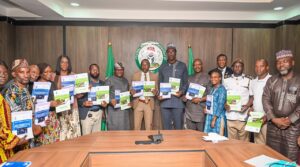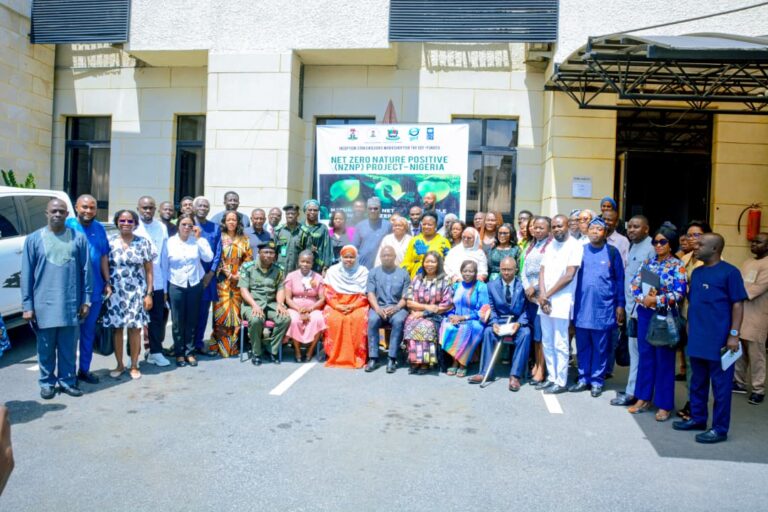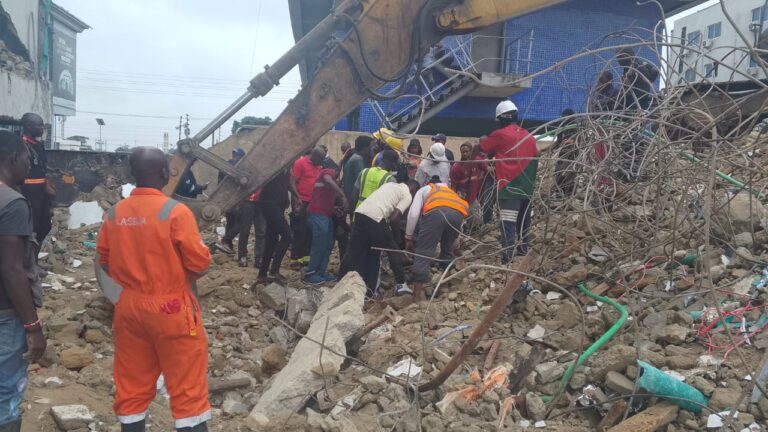
By Fatima Saka
The Minister of State, Federal Ministry Of Environment,Dr Iziaq Kunle Salako has emphasized that Antimicrobial Resistance is not only a public health threat, but it has huge implications for global economic wellbeing and security, affecting both developed and developing countries.
As the federal government on Thursday in Abuja launched a comprehensive policy to combat AMR in the environmental sectors.

The Minister of State for Environment added that the World Health Organization outlined AMR as one of the ten top threats to global health.
Also, according to the United Nations Environmental Programme (UNEP), AMR is a global crisis that cannot be understood or addressed separately from the triple planetary crisis.
Salako reiterated that antibiotics play a critical role in reducing the burden of communicable disease all over the world.
“However, resistance to previously potent antibiotics has become a major problem of major public health significance requiring a range of interventions and multidisciplinary approaches.”
He said that this growing trend of resistance to antibiotics calls for global action to monitor and control unnecessary use of antibiotics in humans and animals which eventually gets to the environment.
Dr. Salako underscores the 2022 Global Antimicrobial Resistance and Use Surveillance System (GLASS) reports which highlights alarming resistance rates among bacterial pathogens that cause the deadliest infections with other pathogens like virus, fungi and protozoa also becoming resistant. “This report shows that the AMR threat is growing at an alarming rate making treatment challenging with longer hospital stays, increased mortality and higher healthcare cost.”
According to the minister for state environment, the World Bank estimates that AMR could result in US$ 1 trillion additional healthcare costs by 2050, and US$ 1 trillion to US$ 3.4 trillion gross domestic product (GDP) losses per year by 2030.
“Nigeria as a responsible member of the global community is committed to adopting a holistic approach to addressing AMR to ensure all sector involvement, no duplication and efficient use of scarce resources.
“To achieve this, and protect public health, food security and the environment, the recognition of the interconnectedness between human, animal and environmental health in line with the One Health principles is central.
Salako revealed the Federal Ministry of Environment has begun a number of activities aimed at laying a solid foundation for AMR surveillance in the environment sector of our country, which includes:
AMR situation analysis in the environment sector conducted in 2020 including laboratory and capacity needs assessment of environmental reference laboratories domicile with NESREA to pave the way for setting up AMR surveillance in the environment sector and provide recommendations for strengthening capacities for AMR surveillance within the sector.
Establishment of the Integrated National Environmental Health Surveillance System (INEHSS) in 2022 for real time environmental health and sanitation scientific data collection and processing for informed policy decisions, planning, monitoring, evaluation, early warning signals and response to environmental health challenges including disease outbreak. The INEHSS provides a premise for AMR surveillance in the environment considering the unsound release of antimicrobial residues in our environment.
7. Despite these efforts highlighted above, a lot still needs to be done for the environment sector to come up to speed and be at par with other One Health sectors with regards to AMR management. It is in this context and in line with the mandate of the ministry that this policy on national antimicrobial resistance for the environment sector has been developed.
Outlining the implementation of this policy and in collaboration with other stakeholders, the Federal Ministry of Environment intends to follows:
• Create an AMR surveillance system in the environment sector by integrating AMR into INEHSS which is an existing surveillance system in the environment sector, in order to provide timely alerts on AMR spread.
• Regulate the discharge and distribution of antimicrobials into the environment.
• Promote public knowledge and awareness on AMR and implication of indiscriminate Antimicrobial Discharge (AMD) into the environment.
• Establish national standards for monitoring and controlling antimicrobials in the environment through the development of: roadmap for monitoring AMR in the environment.
– Standards for Antimicrobial residue, Antimicrobial Resistance Genes (ARG) and Antimicrobial Resistant Bacteria (ARB) discharge into the environment
– Database of all allied industries, institutes, healthcare facilities and farms in Nigeria
– And most importantly strengthening of Environmental Health Officers’ capacity to track the activities of the culpable facilities.
In his remarks, Koffy Kouacou Dominique FAO Representative ad-interim in Nigeria And ECOWAS, Mr. said the National AMR Policy for the Environment sector consists of 4 objectives and also to articulate the requisite policy interventions and map out the roles for public and private sector stakeholders.
“This is important in ensuring that all relevant environment stakeholders get sensitized and participate in the fight against AMR in the environment specifically and generally in the animal human interface.”




God bless our working minister Sir,
Indeed you are a blessing to this nation